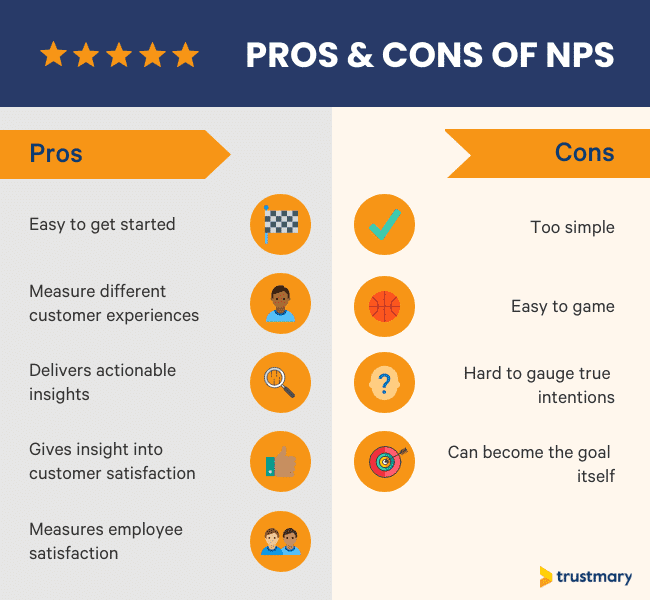Customer satisfaction is one of the most important elements of business success, but it is also one of the most difficult to measure. As with most quantifiable data, customer satisfaction is generally gauged through surveys, polls, and sometimes interviews and focus groups.
Companies need a more consistent and convenient way to measure their customers’ satisfaction level, which is where the net promoter score has historically come into play.
However, earned growth rate is dramatically different in that it measures how much money the organization has generated through customer referrals, rather than simply predicting referrals. This can offer greater value from a business standpoint while highlighting successes or weak points in a company’s referral program.
Definition of earned growth rate
The earned growth rate (EGR) of a business is the amount of money it has generated through customer referrals. By measuring its EGR, your company can gain deeper insight into its customers’ satisfaction and loyalty while determining the ROI driven by its existing consumer base.
The key benefit of EGR is that it directly correlates referrals with revenue. This adds a financial component to measuring customer loyalty that other metrics, such as net promoter score, lack.
Limitations of net promoter score (NPS)
Earned growth rate is considered the successor to net promoter score, or NPS. The NPS is the most widespread methodology for analyzing customer satisfaction. By using customer feedback to guide marketing strategies, the net promoter system helps companies improve their brand image and drive more sales effectively. But it has several weaknesses.
The focus of NPS lies in intent, not action, so it’s only a predictive metric. It only measures the likelihood of a customer recommending a company, rather than evaluating actual referrals customers make. Although this may be helpful in some contexts, it still deprives a business of the tangible insights it needs to make more data-driven decisions. It cannot tell you whether your referral program is working or not, how much your customers are growing your revenue, and what consumers are actually doing to promote your business.
Another limitation of NPS is its inability to reflect the nuances of customer-business relationships accurately. As a result, it falls short when it comes to calculating another vital metric: customer lifetime value (CLV).
NPS lacks the ability to account for the wide range of factors influencing consumer behavior. These include geographic factors, environmental factors, societal and cultural factors, and psychographic qualities like values, desires, and goals. Relying solely on NPS for your referral program or marketing efforts can cause you to overlook important factors that affect your audience.
Finally, one of the greatest issues with NPS is its high probability of bias. The sample size used to calculate NPS may not accurately reflect a company’s entire customer base. A few extremely positive or negative responses can lead to inaccurate conclusions about an audience’s feelings and expectations.
The lack of actionable insights ultimately makes it a challenge for businesses to successfully make meaningful changes by using NPS alone. That is why EGR presents such a powerful and desirable alternative.
The origin of earned growth rate
In his book “Winning on Purpose,” Fred Reichheld, creator of the net promoter score, explained how mega-brands like Peloton, Apple, and Mercedes-Benz have used NPS to create more happy customers and boost lifetime value. But he also admitted that NPS doesn’t usually give a full picture of customer satisfaction on its own. Acknowledging the limitations of NPS, he unveiled earned growth rate as an improved, complementary metric to NPS.
After Fred Reichheld created the net promoter system, he realized that the metric could be too biased and ultimately mislead business decisions. When he developed EGR as a complementary metric, the business world found it to be extremely helpful.
Now, it is one of the best NPS alternatives. Companies can use the two in tandem, or combine EGR with other customer satisfaction metrics, to paint a more detailed picture of their existing and growing customer base.
Why earned growth rate outshines NPS
The holistic view of EGR makes it more valuable when it comes to optimizing referral programs and calculating customer lifetime value. Rather than look at probability, it measures how many customers referred more customers and how much revenue these referrals generated.
Its adaptability also gives EGR a cross-industry advantage; furthermore, EGR can be more accurate in predicting CLV and business growth, which makes it a valuable tool for business growth and strategic planning.
Decoding the earned growth rate calculation
The formula for calculating earned growth rate is simple:
EGR = Net revenue retention + Earned new customers – 100%.
- Net revenue retention (NRR) is the revenue generated this year from customers who were also with you last year.
- Earned new customers is the percentage of revenue generated from newly referred customers (within the year)
Comparing revenue, it becomes easy to see how a company is leveraging its consumer base for maximum profit. For example, if a business that retains 75% of its customers and generates 40% of its annual revenue from new referrals has an EGR of, then its EGR would be 14%.
Strategies for amplifying earned growth rate
If you find that your company’s current EGR is below expectations, or you want to make yours even higher, there are two core strategies to use.
Focusing on loyalty
Happy customers refer more people. But it’s also important to consider your sales funnel and how you are encouraging customers to continue down the pipeline after conversion. An organized referral program is the best way to ensure your company is able to maximize its CLV and generate more revenue through satisfied customers.
Customer feedback also plays a large role in raising EGR. Gathering input from your audience is important to make strategic improvements that lead to long-term growth. Rather than guessing what would make the buyer’s experience better, go directly to the source. Ask people who converted recently what their favorite aspects of the sales process was and where they wish things could have been different. This can help you modify your sales experience to delight even more customers.
At the same time, requesting feedback and expressing appreciation shows existing customers that you value their voice. This can enhance the customer experience, which leads to more revenue growth, greater loyalty, and lower churn rates.
Focusing on referrals
An organized referral program creates a unique pipeline that encourages engaged customers to promote your business. It can lead to predictable growth that ultimately boosts your EGR, and makes the needed referral data for this metric extremely easy to track and gather.
Double-sided rewards are highly effective in referral programs. They incentivize customers to refer and encourage conversions by offering a bonus. This increases customer value and increases referral revenue.
Automated referral software and links can generate more traffic and help boost your referral rate as well. This also frees up time in house, delivers real-time metrics, and helps your company make adaptive improvements.
The strategic advantage of earned growth rate
EGR and NPS are both effective tools for measuring customer satisfaction, but the NPS has limited insights and a higher risk of bias. Using EGR is the most effective way to gauge consumer loyalty and determine how much revenue referrals are generating for your company.
By focusing on increasing your EGR, your company can simultaneously boost its CLV and loyalty. This can go on to positively impact your brand reputation as well, which can increase organic conversions.
If you’re looking to invest more in EGR, a dedicated referral program is the best way to do it.





